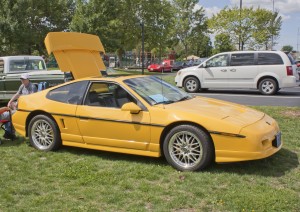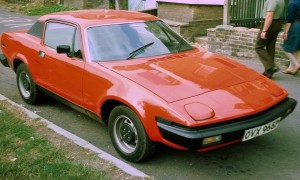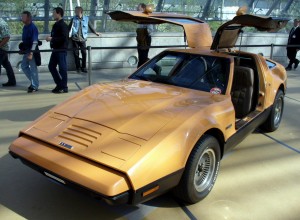Three Sports Cars That Should Never Have Been Made

European manufacturers are responsible for a wide collection of awesome motors and incredible projects, particularly sports cars. Some of the most recognized manufacturers include Aston Martin and Ferrari – who are world renowned for inspiring the automotive industry to further and advance their motors.
On the contrary, there is certainly a range in automobiles that have either failed miserably in sales, had a flaw in their manufacturing or just looked outstandingly ugly.
Sports cars are highly valued to those who wish to own a motor that is immense yet affordable, as a cheaper alternative to some of the best supercars.
A person’s driving experiences is significantly improved once indulging in a sports car and for this reason owning a sports car of such a high quality is very popular.
It is important, however, to understand how necessary it is for a sports car to be manufactured well as they are still an expensive thing for a buyer to invest in.
If someone is in a good position to be able to afford a sports car, they will be looking to purchase a car that will compliment their reasons for wanting one. Whether the reasons for buying one is for their extensive capabilities in both speed and technology, or the sleek and beautiful appearance of many – your car should meet certain standards to be worth the money.
Some of the worst engineering in automobiles can come from both modern projects as well as retro ones. Some of the worst sports cars that should have never been made can be exemplified below.
Pontiac Fiero
 Pontiac built this structure from 1984 up until 1988 and it became a huge let down to those that were led to believe this model would be something magical.
Pontiac built this structure from 1984 up until 1988 and it became a huge let down to those that were led to believe this model would be something magical.
It was announced before revealed by the Pontiac group that the vehicle would be an affordable sports car with a mid-engine and beautifully designed with new concepts and ideas. Due to the layout of the of the engine, it was a rare concept that was not very popular on the road, although it always promised to be a successful design for racing.
It’s first developments included the use of a front suspension that was based on that of the Chevette, this was a big weakness to the car that made it one of the reasons it was unfavored. The car itself had a low performance because of its slow speed, which was one thing that sports car fanatics were very disappointed with.
The evidence of the failing of this sports car comes from the statistics of unmet targets in their expectations of sales. In the first year, the desired volume of 100,000 buyers was cut short by over 35,000. Unfortunately for Pontiac, the sales only decreased each year after. Improved and developed versions of this car were brought to the market by 1988, however its original image managed to steer away a fair amount of buyers.
1975 Triumph TR7
 The distinctive layout and shape of this project was predicted to be the future of car design, but very quickly became a flop when the car’s long-line body was dismissed as an unpopular choice.
The distinctive layout and shape of this project was predicted to be the future of car design, but very quickly became a flop when the car’s long-line body was dismissed as an unpopular choice.
The main reason for this car failing was not based heavily on the design or the technology and engineering of it, it was in fact that poor quality of the manufacturing. The Triumph cars were well-known for short circuits and for having a terrible lifespan. There were many common problems with these sports cars such as their tendency to let leaks in and the water and oil pumps ceased to function.
Reviews at the time of release gave very little praise to the features of this car, including the engine. The engine had a high number of reliability issues with proneness to overheating and having bad cylinder heads.
With over 112,000 being produced at the time, only 2,712 survive making it a rarity that could potentially be treasured in many years to come.
Already withstanding a bad reputation, the developments of this car failed to revive itself. However the convertible version in 1980 (TR8) did prove to be improved to an excellent standard that many didn’t get the chance to experience as they had already pre-judged from the last model.
1975 Bricklin SV1
 This model was pronounced as a ‘safety car’ and an evolution in the design of sports cars.
This model was pronounced as a ‘safety car’ and an evolution in the design of sports cars.
It’s arguably biggest feature that stood out to all was the gullwing doors that swung upwards, just like the Back to the Future signature motor, the DeLorean.
The car that was expected to be the concept sports car of the future incorporated energy absorbing bumpers and dent-resistant materials to make up what was supposed to be a revelation.
The safety element added to the car was the choice of colors that all reflected those associated with safety, such as green, red, white and orange. The use of these colors were said to be a range of options that would alert other drivers of the car’s location.
The key concepts were what attracted car collectors and buyers, however they were let down hugely by the mediocre construction and the flaws in engineering.
The 175-horsepower Ford V-8 engine was a major flaw in the car as it had low sufficiency and struggled with even small loads and could not take much weight. As a car that only appealed as something fascinating to look at but not to drive, the price of this motor added to up to $10,000. The demise of this car happened fairly quickly and even the attractive gullwing door eventually began to cause problems, with owners admitting that the functions became faulty.
It is to be appreciated that these models and other failed models will still be appreciated by many, although they may perform badly. Considering the average modern price of a sports car and the popular reasons why people buy them, will these poorly made cars ever be good enough to invest in and buy again? Or do they just make for good displays?
Do you like this blog? Can you think of any other sports cars that should never have been made? If so, please let us know in the comments.
This sports car blog was proudly written by Rachel Jensen



















